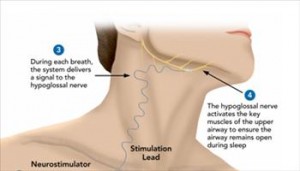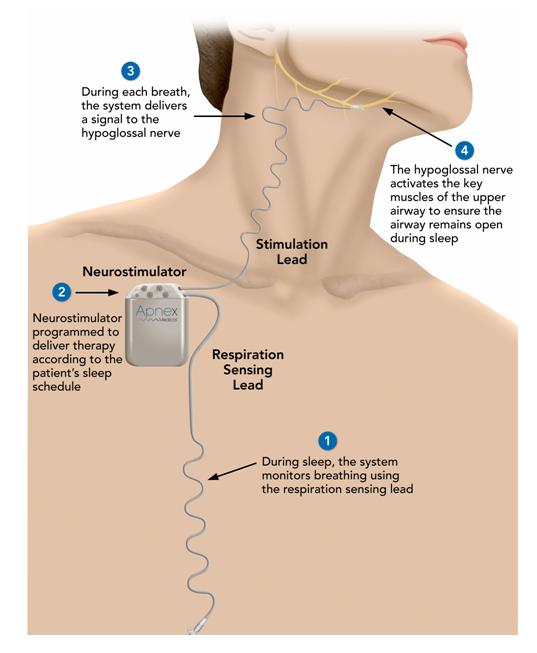 Digital News Report – Researchers at the John Hopkins Sleep Disorders Center say that Hypoglossal nerve stimulation can increase airflow in obstructive sleep apnea (OSA) patients.
Digital News Report – Researchers at the John Hopkins Sleep Disorders Center say that Hypoglossal nerve stimulation can increase airflow in obstructive sleep apnea (OSA) patients.
“With HGNS, airflow increased in all of our patients, and increased progressively with stimulus amplitude,” according to Alan R. Schwartz, MD, medical director of the Sleep Center at Johns Hopkins Bayview Medical Center.
Schwartz and his team investigated the Apnex HGNS System, an implantable therapy that is intended to work by activating the muscles in the upper airway to ensure that the airway remains open during sleep.
“The increases in airflow we observed were of sufficient magnitude to eliminate inspiratory airflow limitation (IFL) in the majority of patients,” Schwartz said.
During their study, the researchers altered the current and pulse widths in a variety of patients with severe and moderate sleep apnea. They found that the stimulation didn’t awaken their patient and airflow was improved.
“In our study, acute unilateral stimulation of the hypoglossal nerve during sleep in patients with obstructive sleep apnea resulted in progressive increases in inspiratory airflow with increasing stimulation intensity, and inspiratory flow limitation was completely eliminated in the majority of patients,” said Dr. Schwartz. “Of note, inspiratory airflow returned to baseline levels on alternating unstimulated breaths, suggesting that HGNS has a direct effect on lingual muscles and airway patency without arousing patients from sleep.”
The HGNS device is currently only available for clinical trial use. More information on the clinical study can be found at www.SleepApneaTrial.com.
By: Jason Chang
Health Reporter

